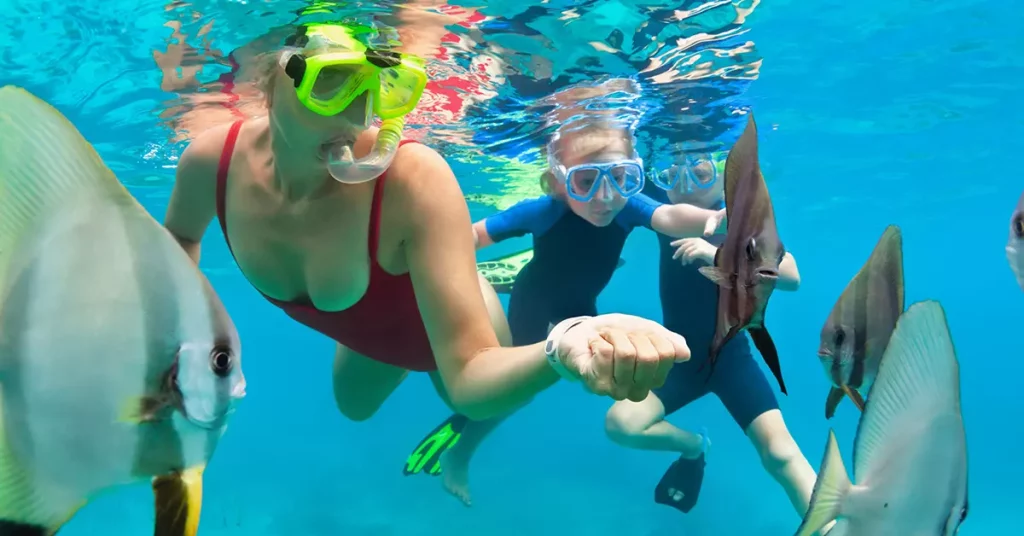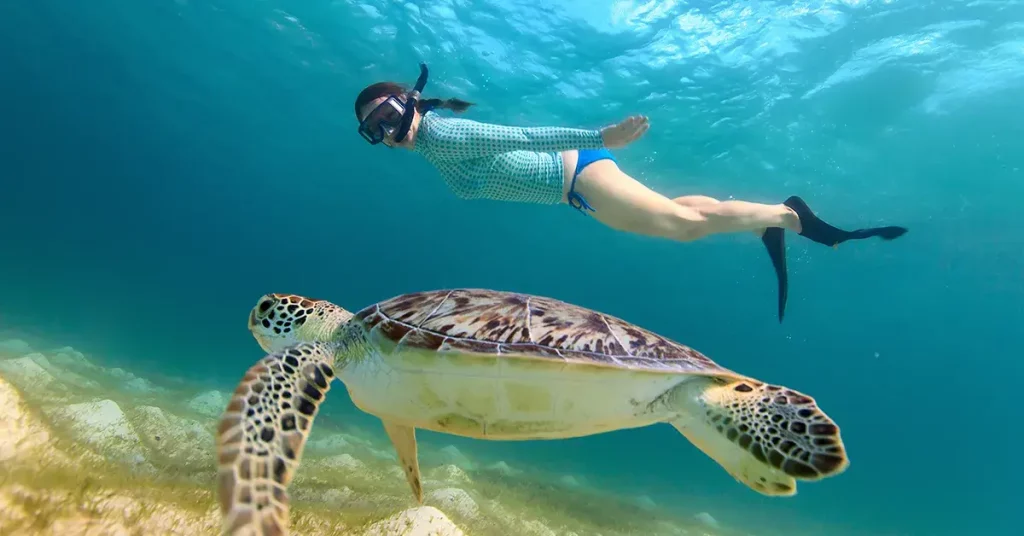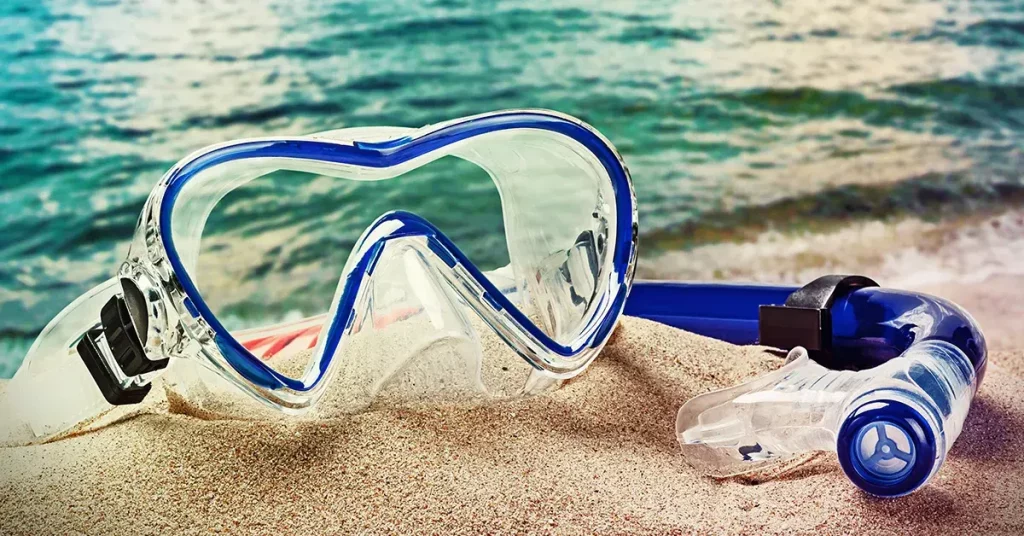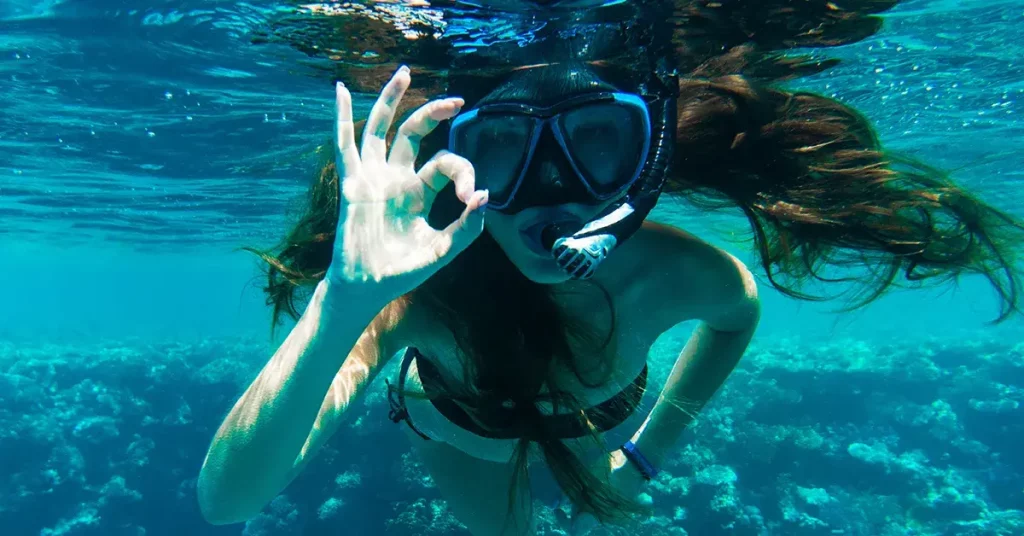You’ll need to learn how to use a snorkeling mask and any other snorkel gear you might want to pick up before your first snorkeling trip.
Part of the appeal of snorkeling comes down to its simplicity. Where some water sports can be a little complex– and even dangerous without the right training– snorkeling keeps things simple and invites everyone to participate. As long as they know how to swim, everyone young and old can get started snorkeling in no time at all.
Of course, even a simple activity does have a bit of a learning curve, and that’s the case here. This article is packed with information to help you get over these initial hurdles and enjoy snorkeling.
Get to Know Your Gear
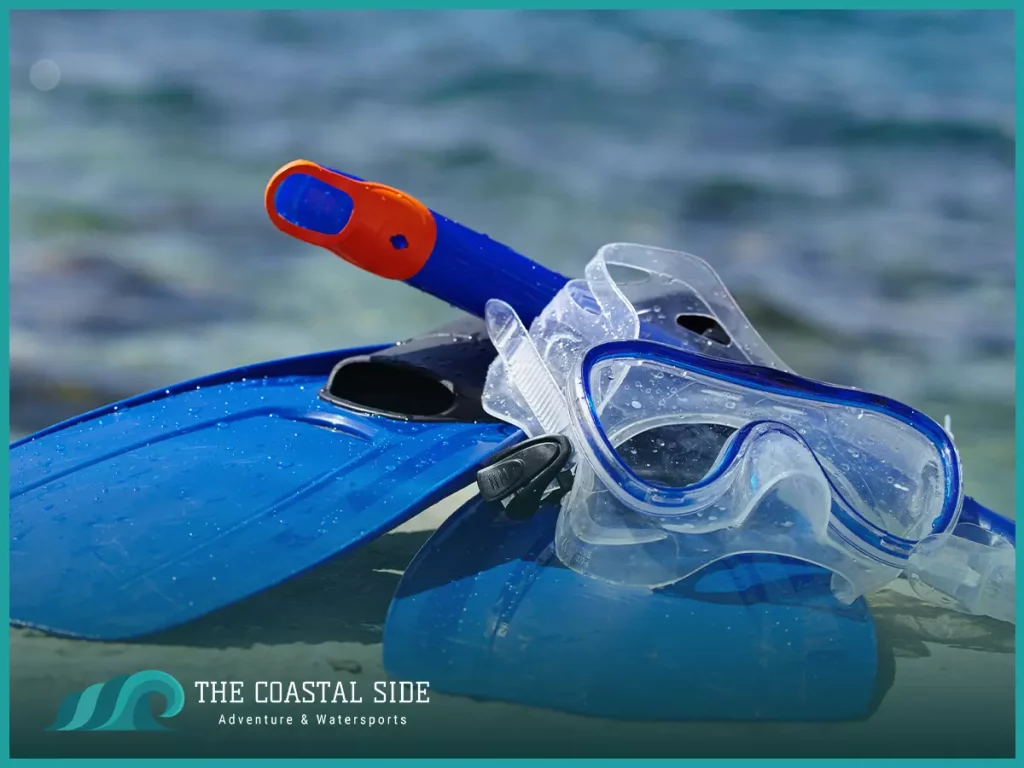
You won’t need to buy a bunch of expensive gear to get started in snorkeling. With just a couple of basic pieces, and some practice using those pieces properly, you can fit in with the rest of the snorkelers in no time.
Where many snorkelers will just rent equipment for their outings, buying your own allows you to get the proper fit and save money in the long run. Here are the pieces of equipment you’ll want to get to know while learning how to snorkel.
Snorkel Mask
The first piece of your equipment to get to know is the mask itself.
While there are full face snorkel mask designs available today, most snorkel masks only cover your eyes and your nose. When properly fitted and put in place, the mask will create a seal around part of your face and will keep water out while you explore the underwater world.
By keeping the water away from your eyes, a snorkeling mask helps you see incredible underwater scenery far more comfortably than if you simply opened your eyes on a dive underwater.
Snorkel Tube
A mask is a great start, but the snorkeling experience would not be what it is without a snorkel tube, also known as a snorkel barrel.
The tube makes it possible for you to keep your head down, just under the surface of the water, while still breathing comfortably. This is nothing more than a breathing tube that has a mouthpiece on one end and a wide opening on the other. By holding the mouthpiece in your mouth and keeping the open end above the water’s surface, you can breathe in fresh air while looking down into the water below. It’s hard to think of a better way to explore shallow water with less effort than to be floating horizontally while looking down thanks to the help of snorkel gear.
Swimming Fins
To be fair, we could have stopped our list of snorkel equipment after the last two entries. If you have a mask and a tube, you can get started right away– if you are a strong swimmer.
With that said, adding fins to your setup can be a big upgrade. Fins are strapped onto your feet and they amplify your kicking power greatly while swimming. Where kicking your feet can certainly provide some forward momentum and control in the water, you’ll quickly turn into a dolphin with a good pair of fins firmly affixed to your feet.
Experienced snorkelers who wear fins can easily make their way around calm waters and see whatever is there to be discovered.
How to Use a Snorkel Mask and Tube
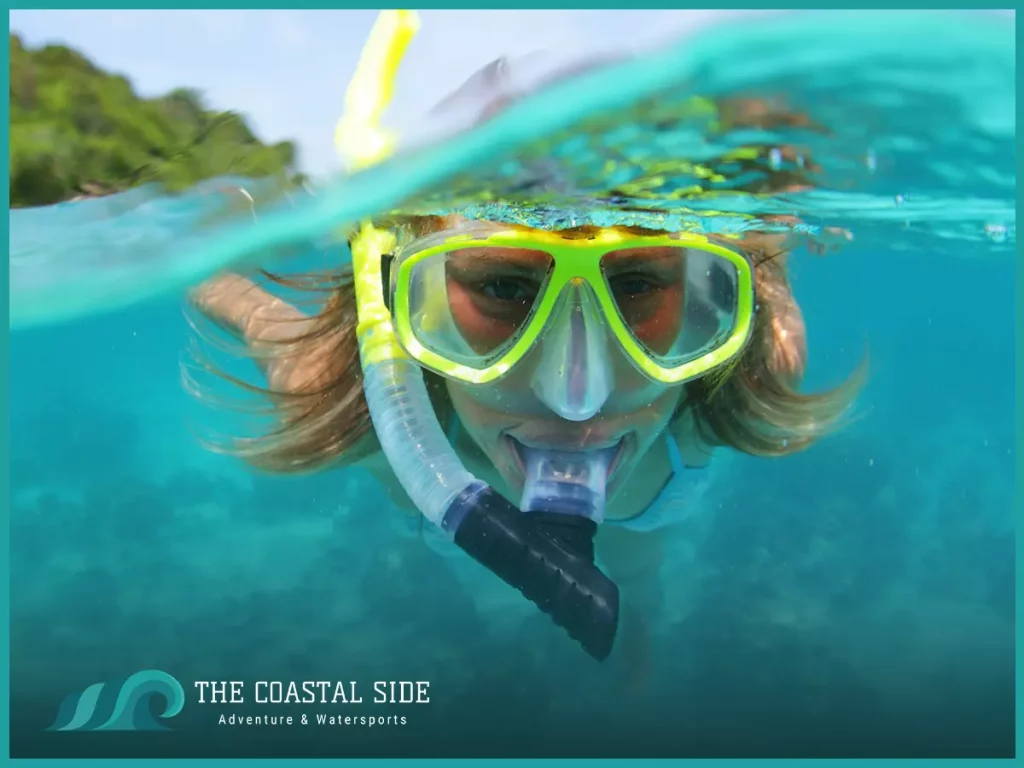
The learning curve with snorkeling is far shorter than something like scuba diving. To use this method of seeing marine life and other underwater sights, you only need a bit of practice to get up and running. Mastering good snorkeling technique is easy enough for most people after just a few minutes in the water. The bullet points below highlight the keys to keep in mind as you get started.
Ease into the Water
Once you have your gear assembled and ready to go, ease your way into the by wading in.
If you are going to wear fins, put them on before walking into the water (more on that later). Get in at least up to your waist to get comfortable with the water temperature before you start to put your diving mask in place and get ready to hunt for marine life.
Create Suction
Now that you are standing in the water ready to go, put your mask on your face and press firmly to create a seal around your eyes and nose.
You’ll want to create this seal before you go down into the water so you don’t start out with water inside your mask.
Put Your Mouthpiece In
This is the time to put the mouthpiece from your tube into your mouth and make sure you can breathe freely.
As long as you can breathe through the tube at this point, you should be able to breathe underwater once you dunk your head in.
Go for it!
Now is the time to actually put your gear to the test and dip your head under the surface.
You’ll want to use your swimming skills to get horizontal on top of the water and let your face go down under the surface. If your mask and snorkel are on correctly, you’ll be able to see and breathe without trouble once in the right position.
Take Deep Breaths
While there isn’t much of a science to breathing through a tube, there is one issue you’ll want to avoid.
If you take quick, shallow breaths, you won’t clear the air you exhaled into the tube and you’ll just be rebreathing the same air.
To breathe properly, make it a point to take a deep breath each time you breathe in and out, as that will clear the air and help you get fresh oxygen down the tube. This is one of the important tips to keep in mind when snorkeling, but it will become second nature soon enough.
Get Comfortable Wearing Fins

Once you have your breathing down and you are comfortable in your mask, you’ll be amazed at what you can uncover in the underwater world. Whether it’s marine life, a beautiful sandy bottom, or just some things that have been dropped by humans over the years, there is always something to discover.
Adding fins to the equation can take you even further, but they are a little uncomfortable to wear at first. We have a couple of tips to help you manage your fins effectively.
Wait until you’re wet
Don’t put them on until you are at the water’s edge! If you put them on far from the shoreline and then try to awkwardly walk that whole distance, you’ll regret it. Fins are great for a swimming boost, but they are hard to walk in on dry land.
Perfect your kick
Once in the water, the key to using fins effectively is to make long kicking strokes with your legs. Think of the way a fish uses its tail to build speed in the water. This is the same idea that you’ll be trying to accomplish with your fins – make long, smooth actions that will push as much water as possible behind you, pushing you forward. Once you get into a rhythm, you can build up surprising swimming speed with only modest effort.
Avoid These Common Snorkeling Mistakes
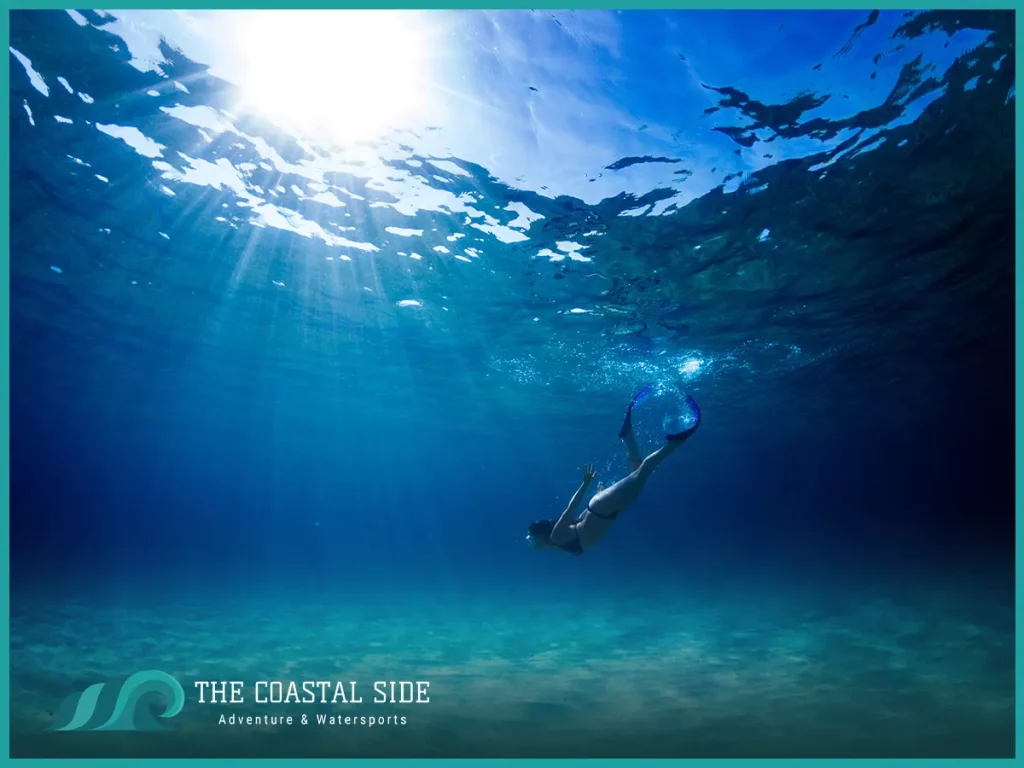
As we’ve already mentioned, snorkeling is relatively easy for anyone who can swim. As long as you practice basic water safety and don’t put yourself in a dangerous situation, this is a great way to have a good time with family and friends. With that said, there are some common mistakes that are made in this activity, so we’d like to point some of those out below to help you avoid them.
Going too fast
This is supposed to be a leisurely activity, so take your time and swim slowly. If you try to swim too quickly with a mask and snorkel, you might find that your mask comes loose or you have trouble holding the mouthpiece in your mouth for very long. Snorkeling is a great way to sightsee underwater, so don’t be in a hurry and just lay flat at the top of some shallow waters to see what you can see.
Poorly-fitting equipment
An easy way to ruin your time in the water is to have a snorkeling mask that doesn’t fit. You’ll want to make sure the mask fits snugly so it keeps water out and provides you with a clear view. Even a thin layer of water on the inside of the mask lens will obscure the beauty you are trying to enjoy.
Going down too deep
This mistake won’t taste very good, especially if you are snorkeling in saltwater. If you get your head down a little too deep into the water, the top of your snorkel tube will dip below the surface and water will come flooding in. Suddenly, instead of fresh air, you’ll get a mouth full of water and you will have to come up and reset. Do your best to stay calm as you come up to take that next breath.
Practice is Your Path Forward
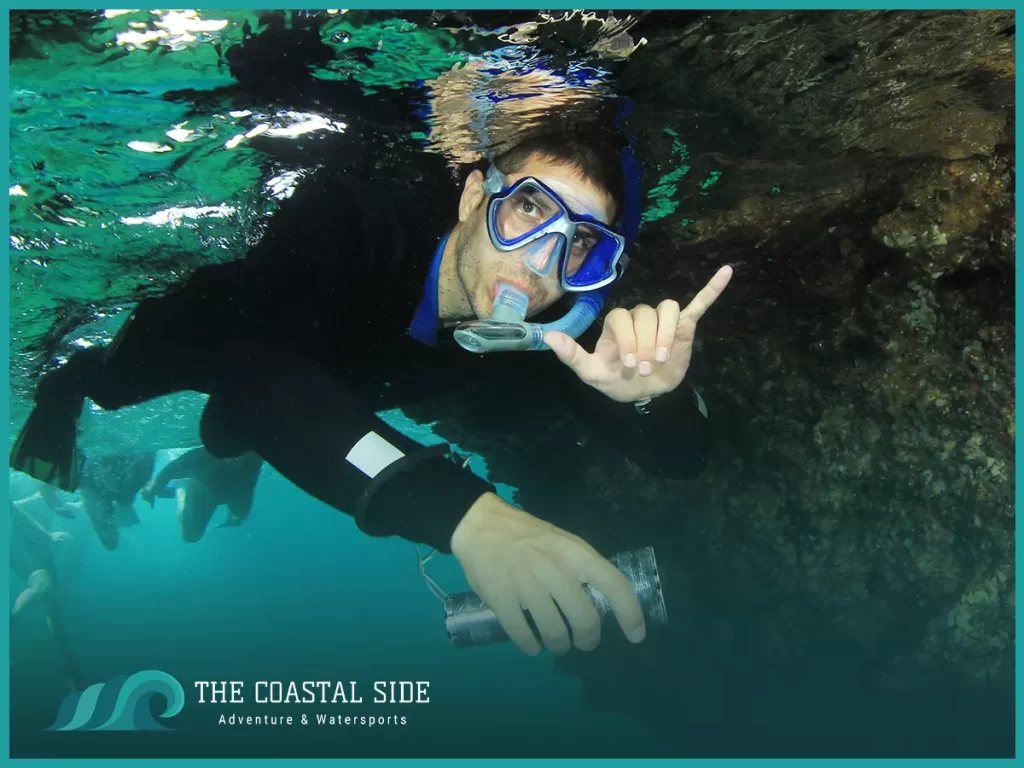
It’s a good idea to read an article like this that will help you understand the basics, but getting out and trying this activity for yourself is the only way to build your skills and confidence.
Whether you rent some equipment or buy a mask that fits you perfectly, get out as soon as possible and see how much fun you can have with this peaceful pastime.

